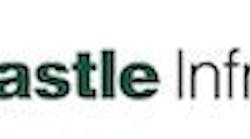Infiltration System Achieves Low Impact Development at Washington Shelter
About the author:
Oldcastle Infrastructure, www.oldcastleinfrastructure.com, 800.579.8819
Torrent Resources, an Oldcastle Infrastructure company, was awarded the contract to develop, manufacture and install a storm water infiltration system to achieve low impact development (LID) goals at the Kirkland Shelter for Women and Families. Occupying the northern portion of the Salt Rock Church property, The Shelter Project showcases Oldcastle’s ability to develop a greener and customized solution that saves the client effort, time and money. In conjunction with Oldcastle’s BioPod system, Torrent Resources’ MaxWell dry well allowed the client to reinforce and improve its existing infrastructure for a reliable solution.
The shelter that was being built sat above a 20-foot layer of poorly drained till material. As a result, shallow infiltration was not possible. Below the impermeable till layer was a layer of outwash. This required a pretreatment solution approved by the Washington Department of Ecology for Enhanced Treatment. Torrent Resources was selected for the contract to complete this update. The project required not only installation but also geotechnical work to know if a MaxWell was the right infiltration best management practice (BMP). The client selected two 50-feet deep MaxWell IV dry wells to provide infiltration, citing a number of important factors, including:
- High storm water storage volume;
- The ability to accommodate the site without impacting the project schedule; and
- The ability to provide an efficient, deep infiltration system with a low impact development design.
Oldcastle Infrastructure’s ability to integrate products together for efficient use on site is evident in the Kirkland project. The use of BioPod and MaxWell IV systems together created an effective treatment train for an all-encompassing solution. The Kirkland shelter update was a strong example of pre-treatment for influent storm water. As materials become permeable, a deep infiltration system from MaxWell IV dry well systems is key to a reliable solution that allows the design team to meet LID goals. Using BioPod as part of this project provided enhanced treatment as stipulated and required by the Washington Department of Ecology and upstream protection for the MaxWell dry wells. The post-construction percolation test yielded an in-situ flow rate of 1.09 CFS (489.2 gpm), which will drain the storage system from full in a little more than 2.8 hours. With many site constraints, BioPod was delivered in September 2019 as part of the treatment train for the MaxWell IV system. The MaxWell system was installed and tested in less than one week so as not to impact the project schedule, making it the most feasible, constructible and cost-effective solution.







